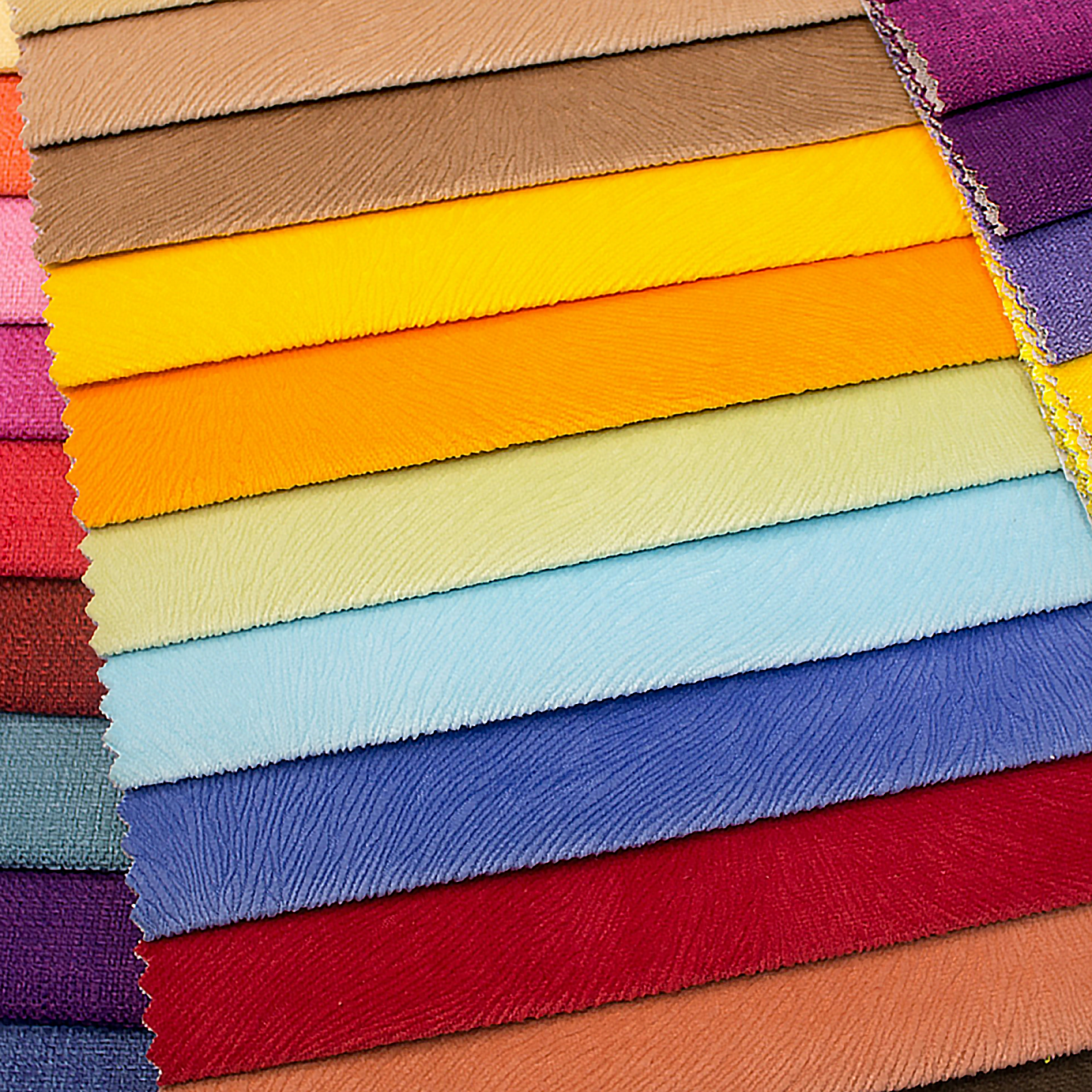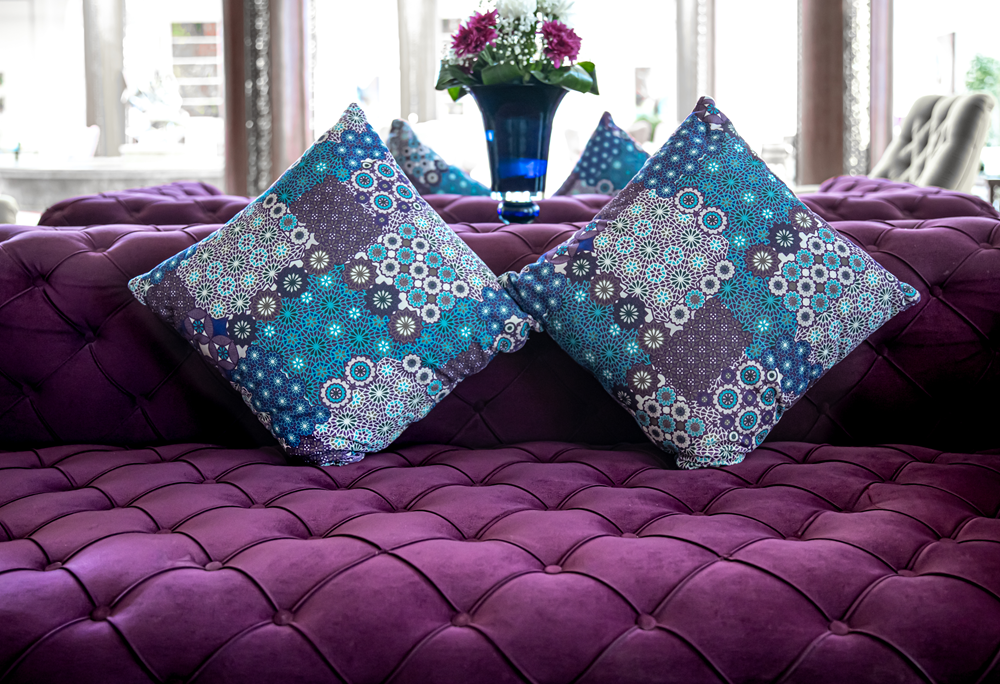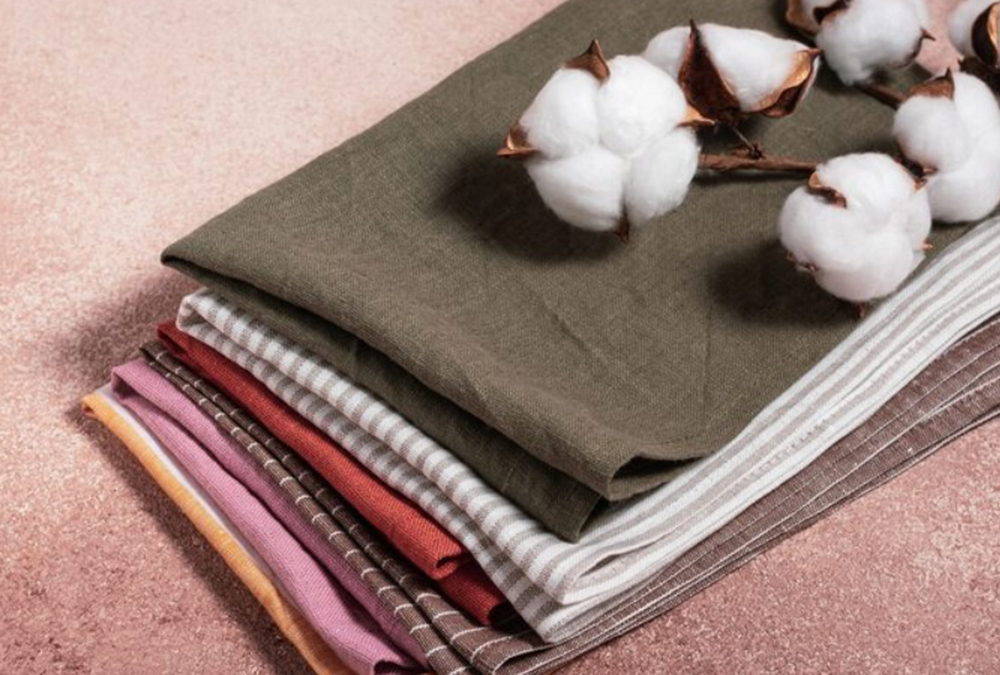Walk into any fabric store and you'll see them side by side: velvet and velour, both soft, both plush, both undeniably luxurious. At first glance, they might seem like twins. But run your hand across each one, and you'll feel the difference right away. Velvet has that dense, smooth pile that catches light like liquid silk. Velour feels softer, stretchier, almost like a high-end sweatshirt you never want to take off.
So what separates these two fabrics? It all comes down to how they're made. Velvet is woven using a double-cloth technique that creates its signature short, upright pile.
Velour, on the other hand, is knitted, which gives it more stretch and a slightly less formal feel. Both have their place in fashion, upholstery, and performance wear, but knowing which one fits your project can save you time, money, and a lot of second-guessing.
Let's break down what makes each fabric special, where they shine, and how to choose the right one for your next project.
Key Takeaways
- Velvet is woven, structured, and formal. It has a dense pile that reflects light beautifully and holds its shape well. Best for high-end fashion, upholstery, and special occasion wear.
- Velour is knitted, stretchy, and casual. It has a softer hand feel and more give, making it comfortable for activewear, loungewear, and everyday garments.
- Structure matters. Velvet's woven construction creates stability. Velour's knit construction adds flexibility.
- Cost and care differ. Velvet tends to be more expensive and requires gentler handling. Velour is often more affordable and easier to maintain.
- Both are beautiful. Your choice depends on the look, feel, and function you need.
What is Velvet?
Velvet is one of those fabrics that feels like history in your hands. It's been around for centuries, gracing both royal robes and modern red carpets. What makes velvet so special is its dense, plush pile. The short fibers stand upright, creating a signature soft, smooth surface. When light hits velvet, it reflects and glows. That's why velvet looks so rich in photographs and so striking in person.
Here's how it looks:

The defining feature of velvet is its construction. This fabric is woven, not knitted, which gives it structure and stability. The pile is created by twisting two layers of fabric face-to-face, then cutting them apart. What you're left with is a textile that's soft to the touch but firm enough to hold intricate shapes and tailored silhouettes.
Velvet can be made from a variety of fibres, including silk, cotton, polyester, rayon, or blends. Each fiber brings something different to the table. For example, silk velvet feels smooth and drapes like a dream. Cotton velvet, on the other hand, is more affordable and easier to care for. The fiber you choose changes the weight, drape, and price point of the final product.
How Velvet is Made
Velvet starts on a special loom designed to weave two layers of fabric at once. These layers are connected by vertical threads that form the pile. Once the fabric is woven, a blade cuts through those threads, separating the two layers and creating the plush surface on both sides. This process is what gives velvet its dense, uniform pile.
The pile height can vary depending on the intended use. Shorter piles create a sleeker, more formal look. Longer piles feel softer and more casual. The weaving process also determines the fabric's durability. Tighter weaves produce stronger fabrics that hold up better over time, while looser weaves create lighter, more delicate textiles.
Some velvet goes through additional finishing processes. Crushed velvet, for example, is twisted or pressed while wet to create that signature textured look, like this:

Uses of Velvet
1. Evening Gowns and Formalwear
Velvet is a top choice for special occasion dresses, cocktail attire, and bridal party looks. The fabric's natural sheen photographs beautifully, and its structure helps garments hold their shape through long events.
A velvet gown doesn't just hang on the body; it makes a statement. Designers love working with velvet because it adds instant elegance without needing much embellishment. Here's a beautiful velvet gown from Dior's 2017 couture collection:

2. Blazers and Tailored Pieces
Velvet blazers have made a serious comeback in recent years, and for good reason. The fabric brings texture and depth to structured garments without feeling too heavy. Velvet holds a crisp edge, which makes it perfect for tailoring. You'll see it in menswear-inspired jackets and soft, feminine blouses that need a little extra polish.
Here's a double-breasted velvet jacket from Louis Vuitton:

3. Upholstery and Home Decor
Velvet isn't just for clothing. It's been a staple in interior design for decades, bringing warmth and sophistication to furniture, drapery, and decorative pillows. Velvet upholstery feels plush and inviting, and it wears well when properly maintained. The fabric's ability to hold rich, saturated colors makes it a favorite for accent pieces that anchor a room.
4. Accessories and Costume Design
From handbags to hair accessories, velvet adds a touch of luxury to smaller projects. It's also a go-to fabric for theatrical costumes, figure skating outfits, and performance wear. The fabric's dramatic appearance under stage lighting and its ability to hold intricate shapes make it a performer's dream. Velvet ribbon, in particular, is used for gift wrapping and millinery.
Types of Velvet Fabric
1. Silk Velvet
Silk velvet is the most luxurious version of the fabric. It's soft, smooth, and has a natural sheen that synthetic blends can't quite match. Silk velvet drapes beautifully and feels cool against the skin, which makes it a favorite for high-end evening wear and bridal gowns. The downside? It's delicate, expensive, and requires careful handling.
2. Crushed Velvet
Crushed velvet has that signature crinkled texture that creates a shimmery, almost iridescent effect. The fabric is treated while wet, twisted, or pressed to create irregular patterns in the pile.

This finish gives crushed velvet a more casual, bohemian feel compared to classic velvet. It works beautifully in statement pieces, jackets, and anything with a vintage or rock-and-roll vibe.
3. Stretch Velvet
Stretch velvet by the yard combines the plush feel of traditional velvet with added elasticity, usually from spandex or elastane blends. This makes the fabric more forgiving and comfortable for fitted garments like bodycon dresses, leggings, and dancewear.

Stretch velvet moves with the body, which is why it's so popular in performance costumes and athleisure-inspired pieces. We carry stretch velvet in over 50 colors, making it easy to find the perfect shade for any project.
4. Upholstery Velvet
Upholstery velvet by the yard is heavier, more durable, and built to withstand daily wear. It's often made from synthetic fibers like polyester or a cotton-poly blend, which makes it easier to clean and more resistant to crushing.
This type of velvet is designed for furniture, not fashion, though some designers do use it for structured bags or decorative accessories. The pile is usually shorter and tighter, which helps it hold up under pressure.
5. Velveteen
Velveteen is often confused with velvet, but it's actually a different fabric. Velveteen is woven from a single cloth (not double-cloth like velvet), and its pile is created by cutting the weft threads instead of the warp.
The result is a lighter, less dense fabric with a slightly less luxurious hand feel. Velveteen is more affordable and easier to care for, which makes it a solid choice for everyday garments, children's clothing, and home sewing projects.
What is Velour?
Velour is velvet's more laid-back cousin. It has that same soft, plush surface, but it's made using a completely different process. Instead of being woven, velour is knitted. That knit construction gives the fabric stretch, flexibility, and a more casual feel. You won't see velour on the red carpet, but you will see it in activewear, loungewear, and cozy tracksuits that prioritize comfort over formality.
The pile on velour is created by knitting small loops, then cutting them to make a soft, even surface. The result is a fabric that feels warm, plush, and slightly fuzzy. Velour doesn't have the same sheen as velvet. It's more matte, more relaxed, and a lot more forgiving when it comes to wrinkles and care. Most velour is made from cotton, polyester, or a blend of both.
How Velour is Made
Velour starts as a knit fabric, which is different from velvet's woven construction. The knitting process creates small loops on the surface of the fabric. These loops are then cut or sheared to produce the soft, even pile that velour is known for. Because the fabric is knitted, it has natural stretch in all directions, which makes it comfortable to wear and easy to move in.
The knitting process also makes velour faster and cheaper to produce than velvet. You don't need a specialized loom or a complex double-cloth weave. That's part of why velour tends to be more affordable and more widely available. The trade-off is that velour lacks the formal appearance and structured drape of velvet. It's softer, more relaxed, and better suited for casual or athletic applications.
Uses of Velour
1. Athleisure and Activewear
Velour became a cultural icon in the early 2000s, thanks to velour tracksuits that took over fashion, pop culture, and celebrity wardrobes. Even though the trend has evolved, velour is still used in activewear and athleisure for its comfort, stretch, and soft hand feel. Hoodies, joggers, and leggings made from velour offer a plush alternative to traditional fleece or jersey knits.
2. Loungewear and Sleepwear
Velour's softness makes it perfect for pajamas, robes, and anything meant to be worn at home. The fabric feels cozy without being too heavy, and it's breathable enough to wear year-round. Cotton velour, in particular, is popular for sleepwear because it doesn't trap heat the way synthetic fabrics can. It's also gentle on the skin, which makes it a good choice for sensitive wearers.
3. Children's Clothing
Velour is commonly used in kids' clothing because it's soft, stretchy, and easy to care for. Think sweatshirts, leggings, and onesies that need to hold up to constant washing and active play. The fabric's durability and comfort make it a practical choice for parents, and the plush surface feels cozy for little ones.
4. Towels and Bathrobes
Cotton velour is a staple in bath linens. It's absorbent, soft, and gets better with every wash. Velour towels and robes offer a luxurious feel without the high price tag of terry cloth alternatives. The fabric's smooth surface also means it's less likely to snag or pill, which helps it last longer.
Types of Velour Fabric
1. Cotton Velour
Cotton velour is soft, breathable, and naturally absorbent. It's the most common type of velour used in towels, robes, and casual clothing. Cotton velour feels gentle against the skin and holds up well to repeated washing.
The downside is that it can shrink if not pre-washed, and it doesn't have the same color vibrancy as synthetic blends. But for comfort and natural fiber appeal, cotton velour is hard to beat.
2. Polyester Velour
Polyester velour is more durable, more colorfast, and more affordable than cotton velour. It's the go-to choice for performance wear, activewear, and anything that needs to hold its shape and color through heavy use.
Polyester velour doesn't shrink, pills less, and dries faster than cotton. The trade-off is that it's not as breathable, and some people find synthetic fabrics less comfortable against the skin.
3. Stretch Velour
Stretch velour adds spandex or elastane to the mix, creating a fabric that moves with the body. This type of velour is used in fitted garments like leggings, bodysuits, and dancewear.
The added stretch makes the fabric more forgiving and comfortable, which is why it's so popular in activewear. Stretch velour also tends to be lighter and more form-fitting than standard velour.
4. Bamboo Velour
Bamboo velour is a more recent addition to the fabric world, and it's gaining popularity for its sustainability and softness. Bamboo fibers are naturally antibacterial, moisture-wicking, and eco-friendly.
Bamboo velour feels silky smooth and has a subtle sheen that's closer to velvet than traditional cotton velour. It's often used in baby clothing, eco-conscious loungewear, and reusable cloth products.
Velvet vs Velour: The Core Differences
1. Fabric Structure
The most significant difference between velvet and velour comes down to how they're made. Velvet is woven using a double-cloth process, which creates a dense, structured fabric with minimal stretch.

Paisley burnout velvet by the yard
Velour is knitted, which gives it natural elasticity and a softer, more flexible feel. That difference in construction affects how the fabric moves, how it holds its shape, and how you care for it.
2. Texture and Appearance
Velvet has a smooth, polished surface with a subtle sheen that reflects light beautifully. The pile is short and dense, which gives it that signature luxurious look.
Velour, on the other hand, has a softer, more matte surface. The pile is slightly longer and less uniform, which makes velour feel cozier but less formal. Velvet looks elegant and refined. Velour looks comfortable and approachable.
3. Fiber Composition
Both fabrics can be made from a variety of fibers, but the most common choices differ.
Velvet is often made from silk, rayon, or polyester, depending on the desired price point and drape.

Small velvet diamonds with 90% polyester
Velour is usually made from cotton, polyester, or a blend of both. Silk velvet is the gold standard for luxury. Cotton velour is the go-to for comfort and everyday wear.
4. Drape and Weight
Velvet has more body and structure. It holds its shape well, which makes it ideal for tailored garments and upholstery. Velvet drapes smoothly but doesn't cling to the body.
Velour, thanks to its knit construction, is lighter and more relaxed. It drapes softly and moves with the body, which is why it's so comfortable in casual and athletic wear. If you need structure, go with velvet. If you need a stretch, go with velour.
5. Cost and Durability
Velvet tends to be more expensive, especially if it's made from silk or high-quality synthetics. The weaving process is more complex, and the fabric requires more careful handling and maintenance.
Velour is generally more affordable and easier to care for. It's machine washable, resists wrinkles, and holds up well to everyday wear. That said, high-end velour made from bamboo or premium cotton can rival velvet in price.
6. Typical Use Cases
Velvet is the fabric of choice for formal occasions, high-end fashion, and statement furniture. You'll see it in evening gowns, blazers, upholstery, and performance costumes.
Velour is better suited for casual wear, activewear, and home textiles. Think tracksuits, robes, children's clothing, and towels.
Which Fabric Should You Choose?
Choose Velvet If...
You're designing formalwear or special occasion garments. Velvet brings elegance and structure to gowns, blazers, and tailored pieces. It photographs beautifully and retains its shape even during extended events.
Other use cases are:
- You need a fabric with a luxurious sheen. Velvet's ability to reflect light makes it stand out in any setting, from the red carpet to the living room.
- You're working on upholstery or home decor. Velvet is durable enough for furniture and adds warmth and sophistication to any space.
- You want a fabric that feels substantial. Velvet has weight and body, which makes it ideal for structured designs that need to hold their form.
Choose Velour If...
You're designing activewear or casual clothing. Velour's stretch and softness make it perfect for loungewear, athleisure, and everyday garments.
Other use cases are:
- You need a fabric that's easy to care for. Velour is machine washable, wrinkle-resistant, and low-maintenance.
- You're working on children's clothing or home textiles. Velour is soft, durable, and gentle on the skin, which makes it a practical choice for kids and bath linens.
- You want a plush fabric that's not too formal. Velour gives you that cozy, comfortable feel without the structured elegance of velvet.
Conclusion
Velvet and velour might look similar at first, but once you understand how they're made and where they shine, the differences become clear. Velvet is woven, structured, and formal. It's the fabric you reach for when you want elegance, drape, and visual impact. Velour is knitted, stretchy, and casual. It's what you choose when comfort, flexibility, and easy care are your priorities.
Both fabrics have earned their place in fashion and home decor. Velvet brings drama and sophistication to special occasions and statement pieces. Velour offers softness and practicality for everyday wear, along with relaxed designs. The right choice depends on your project, your budget, and the experience you want to create.
At Zelouf Fabrics, we carry both velvet and velour fabrics by the yard in a wide range of colors, weights, and finishes. Whether you're designing evening gowns or cozy loungewear, our collection gives you the options you need to bring your vision to life. Browse our full catalog, order FREE swatches (just pay shipping), and find the perfect fabric for your next project.




